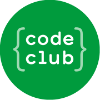Extended Reality (XR) is one of the most important media applications in 5\textsuperscript{th} Generation (5G) and 5G-Advanced. XR traffic is characterized by high data rates with bounded latency constraints, which is challenging for bandwidth-constrained wireless systems. In this paper, we propose two new low-complexity enhanced Outer Loop Link Adaptation (eOLLA) algorithms that significantly improve the downlink system capacity in terms of satisfied XR users. The algorithms exploit the Code Block Group (CBG)-based Hybrid Automatic Repeat reQuest (HARQ) multi-bit feedback for minimizing the radio resource utilization in retransmissions by controlling the first and second block error operation points. Evaluation by means of both analytical assessment and realistic system-level simulations verifies that the proposed eOLLA algorithms increase system capacity by up to \SI{67}{\percent} compared to known OLLA algorithms with traditional transport block based HARQ.
翻译:扩展真实度( XR) 是 5\ text上下标{th} 一代( 5G) 和 5G- 高级 5G 中最重要的媒体应用之一。 XR 流量的特点是数据率高,存在约束性延迟限制,对带宽限制的无线系统具有挑战性。 在本文中,我们提议了两种新的低复杂度增强外环链接适应(eOLLA)算法,这些算法大大提高了满意 XR 用户的下链系统能力。 算法利用基于代码块组( CBG) 的基于代码块组( CBG) 的混合自动重复( HARQ) 多位反馈,通过控制第一和第二块错误操作点来尽量减少再传输中的无线电资源利用。 通过分析评估和现实的系统级模拟,可以核实拟议的 eOLLA 算法将系统能力提高到\ SI{ 67/ percent},而与基于 HARQ 的传统运输块已知的 OLLA 算法相比, 。




